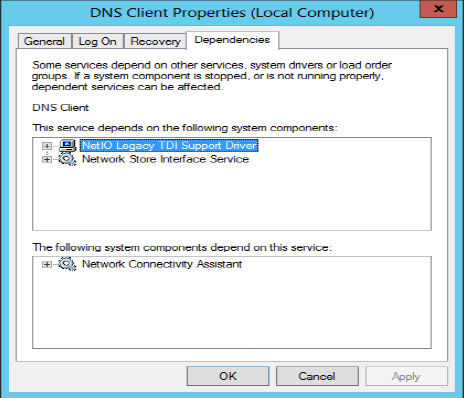Services Snap-In
Windows 8 includes a system management framework tool called the Microsoft Management Console (MMC). The MMC provides access to various snap-ins, with each snap-in providing options for different configurations or an interface to manage items such as policies, accounts, and so on. One of these snap-ins is named Services.msc. It’s not a user-friendly program; rather, it is designed for professionals. Beginners and casual users are better off sticking with the Startup folders to work with auto start programs. Even so, beginners can start to understand how some of the underlying pieces of Windows work by looking through the Services console and checking out what some of the services do.
To start the Services snap-in, press Windows+X on the desktop, click Run, and type SERVICES.MSC. Click OK. When the Services snap-in is open, use the View menu options to choose how you want to view icons. Figure 15.11 shows how things are displayed in the Detail view. The toolbar contains a couple of buttons for showing and hiding optional Console Tree and Action panes. (Both are shown in Figure 15.11.) Extended and Standard tabs are near the bottom of the window. The figure shows how things look in the Extended tab.
FIGURE 15.11 Services snap-in

Clicking the Extended tab opens a new pane at the left side of the program window that shows detailed information about any service name you click. It also provides options to start a service that’s not running, or to stop or restart the service if it’s not running correctly.
If you scroll through the list of services, you’ll probably see quite a few. Exactly which services are listed will vary from one computer to the next. Few, if any, of the services will have any meaning to the average computer user. These things are really only of use to professional programmers, network administrators, support technicians, or other experienced professionals. What follows is mainly for those folks. We don’t summarize what each service does because doing so would eat up several pages and only repeat the information that’s already in the Description column.
The Status column shows Running for those services that are currently running. It shows nothing for services that aren’t running. The Startup Type column shows whether the service is configured to run automatically, if at all. Common settings are:
- Automatic (Delayed Start): The service starts automatically, but only after a delay in time to enable other dependent services to start.
- Automatic: The service starts automatically when the computer starts or when a user logs in.
- Manual: The service doesn’t start automatically. You can start the service, however, by right-clicking the service name and choosing Start or by choosing Start from the Action menu.
- Disabled: The service is disabled and must be enabled from the Properties dialog box before it can be started.
To get more information about a service or change its Startup type, right-click the service name and choose Properties. You see a dialog box like the one in Figure 15.12.
FIGURE 15.12 Properties for the DNS client service

The options you see in Figure 15.12 are typical of the items listed in the Services snap-in. The Description text box provides a description of the services and tells what will happen if you disable or stop the service. The Path To Executable text box shows the location and name of the program that provides the service. The Startup Type option provides the Automatic, Manual, and Disabled options.
The buttons let you stop, pause, resume, or start the service. Some programs accept parameters, which you can add to the Start Parameters text box.
The Log On tab provides options for granting rights to services that need permissions to run. The Recovery tab provides options for dealing with problems when a service fails to start.
The Dependencies tab (see Figure 15.13) is one of the most important of the bunch because it specifies which services the current service depends on (if any) and which services depend on the current service. For example, DNS is a TCP/IP thing (which is the protocol used by the Internet and most modern local networks). If a service isn’t starting and you can’t figure out why, seeing what services the current one depends on might provide a clue. If the dependent service isn’t running, the original one you’re looking at can’t start, so you need to go to its dependent service and make sure it’s starting.
FIGURE 15.13 The DNS Client service Dependencies tab

If you’re interested in learning more about TCP/IP and how the Internet works, a Windows book isn’t the best place to look. Any book on TCP/IP, however, or any book or course that prepares you for MCSA (Microsoft Certified Systems Administrator) or MCSE (Microsoft Certified Systems Engineer) certification would explain all of that in depth. For broader technical coverage of services, consult a technical reference such as Microsoft TechNet at http://technet.microsoft.com.
